“Holocaust Document Archive PDF file – Inventory Catalog of Document Collection” has been added to your cart. View cart
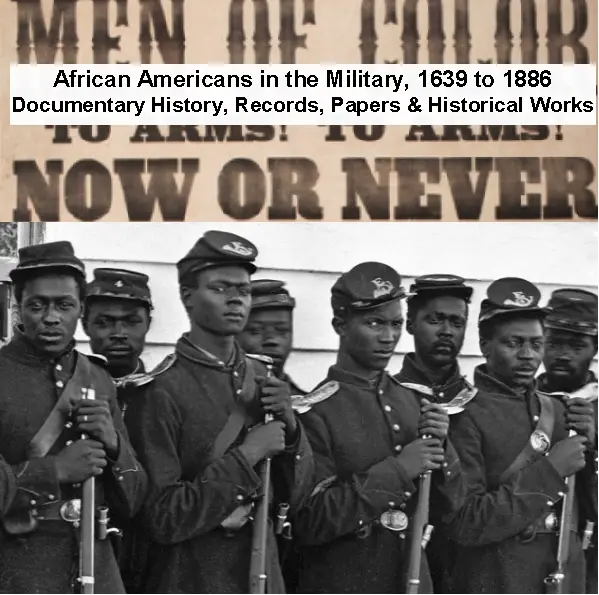
Black Soldiers in US Military History, 1639 – 1886 – Records & Papers
$19.50
Category: War Files
Tag: Black Soldiers
Description
African Americans in US Military: A Historical Timeline
Colonial Period (Pre-1774):
- 1639: The earliest date covered by the collection, indicating the beginning of the military status and service of African Americans in British North American Colonies.
- 1641-1815: Early wars in the United States involving African American military service are documented in “Missing Pages in American History.”
- 1689, 1725, 1780: Casualty reports are available for these years, reflecting African American involvement in colonial military actions.
- 1703: This year marks an early point in the overview of the use of Black individuals in the U.S. Army, as covered in “From Segregation to Desegregation Blacks in the U.S. Army 1703-1954.”
- 1715: Slave population statistics are recorded for this year.
- Throughout Colonial Period: Various military laws and orders in council permitted the arming and use of slaves in the militia during wartime.
Revolutionary War (1774-1783):
- 1774-1783: African Americans actively participated in the War of the Revolution, with records mentioning the use of free blacks and slaves as soldiers, their treatment as prisoners of war, and the enlistment of all-black units (e.g., Connecticut and Rhode Island).
- Post-Revolution: Documents address the treatment of blacks who sided with the English.
War of 1812 (1812-1815):
- 1812-1815: African Americans played a role in the War of 1812, as highlighted in “The Loyalty and Devotion of Colored Americans in the Revolution and War of 1812.”
American Civil War (1861-1865):
- 1861: Publication of “The Negro Soldier a Select Compilation,” a compilation of historical works on early African American military service.
- October 1861: General T. W. Sherman authorized the emergency use of volunteers, including fugitives from labor, for services.
- June 12, 1862: Edward Stanley, Military Governor of North Carolina, sent a letter to the Secretary of War summarizing problems related to loyal masters and the status of enslaved people.
- July 17, 1862: Act passed permitting the President to employ, organize, and use blacks to suppress rebellion.
- August 1862: Following Union defeats at Richmond, requests for using black soldiers greatly increased.
- September 1862: President Lincoln’s proclamation on freeing slaves in rebel states.
- End of 1862: President authorized black troops only in the Departments of the South and the Gulf, though many black units were organized without proper authorization.
- November 29, 1862: Attorney General issued an opinion stating that freemen of color, born in the United States, are citizens.
- December 22, 1862: Presidential proclamation declared that officers of black regiments would be tried as felons, and captured black soldiers turned over to state authorities.
- October 29, 1862: The First Kansas Colored Volunteers became the first black regiment to experience combat during the Civil War at Island Mound, Missouri.
- 1863-1888: The War Department’s Adjutant General’s Office, Colored Troops Division, began compiling “The Negro in the Military Service of the United States.”
- January 26, 1863: The Fifty-Fourth Massachusetts Regiment, the first black regiment of the North organized after the Emancipation Proclamation, was created.
- May 22, 1863: War Department General Order 143 established the Colored Troops Division.
- June 30, 1863: “Preliminary Report of the American Freedmen’s Inquiry Commission” addressed blacks as refugees, military laborers, and soldiers.
- October 1863: Report of the Bureau of Colored Troops.
- February 1864: Yazoo Expedition involving USCT units.
- April 12, 1864: Battle of Fort Pillow.
- April 30, 1864: Battle at Jenkins Ferry, Arkansas.
- May 25, 1864: Defense of Williams Wharf, James River, Virginia.
- July 1864: Expedition from Tennessee into Mississippi.
- July 30, 1864: Explosion of the mine and assault of Petersburg.
- April 1864: General Grant ceased the exchange of prisoners, leading to increased reliance on black regiments in frontline battles.
- October 1864: Operations before Richmond, Virginia, engagement at Fair Oaks.
- November 7, 1864: Jefferson Davis issued a message against a “general levy and arming of the slaves for the duty of soldiers.”
- November 30, 1864: Battle of Honey Hill, South Carolina.
- December 1864: Campaign in Tennessee.
- January 1865: Battle of Fort Fisher, North Carolina.
- February 1865: Wilmington, North Carolina campaign.
- March-April 1865: Abandonment of Richmond.
- April 1865: Assault and capture of Blakely, Alabama; expeditions from Georgetown to Sumterville, South Carolina; engagements at Dingle’s Mill and Boykin’s Mill.
- June 15, 1864: The Fifty-Fourth Massachusetts Regiment attained equal pay.
- 1865-1867: Reconstruction Period, focusing on military employment, civil status, labor, events, and battle reports for African Americans.
Post-Civil War to Early 20th Century:
- July 28, 1866: The Ninth Cavalry Regiment, one of six Black Regular Regiments, was created.
- October 1866 – June 1871: Formation of the 24th Infantry Regiment.
- March 1867: Deployment west of the Ninth Cavalry Regiment.
- 1867: Publication of “A Sketch of the 29th Regiment of Connecticut Colored Troops.”
- March 15, 1869: The Twenty-fourth Infantry Regiment was officially formed by the Reorganization Act of 1869.
- November 1, 1869: First deployment of the 24th Infantry Regiment from Fort McKavett, Texas.
- 1870: Publication of “Army Life in a Black Regiment” by Thomas Wentworth Higginson.
- 1870: Army Reduction Act consolidated six black regiments into four (9th and 10th Cavalry, 24th and 25th Infantry Regiments).
- January 31, 1888: The Colored Troops Division ceased to exist, with most functions transferred to the Volunteer Service Division.
- 1885-1888: The compilation “The Negro in the Military Service of the United States” was completed.
- April 21, 1888: Adjutant General Richard C. Drum requested congressional approval to publish “The Negro in the Military Service of the United States.”
- 1894: “The Negro in the Military Service of the United States” was bound into seven volumes and transferred to the Records and Pension Office.
- 1894: Publication of “Services with Colored Troops in Burnside’s Corps.”
- 1898: Spanish-American War, with the Buffalo Soldiers (9th and 10th Cavalry) playing a significant role in battles like Las Guasimas and San Juan Hill (Kettle Hill).
- 1902: Publication of “Reminiscences of My Life in Camp with the 33d United States Colored Troops, late 1st S. C. volunteers” by Susie King Taylor.
20th Century (Modern History Studies):
- 1973: Publication of “Tabular Analysis of the Records of the U.S. Colored Troops and their Predecessor Units in the National Archives of the United States.”
- 1990: Publication of “From Segregation to Desegregation Blacks in the U.S. Army 1703-1954” by Raymond B. Ansel.
- 1991: Publication of “The Formation of the Ninth Cavalry Regiment: July 1866 – March 1867” by Army Major Harry Johnson.
- 1992: Publication of “The Role of the Buffalo Soldiers during the Spanish-American War” by U.S. Navy Lieutenant Commander Reuben L. Wright.
- 1993: Publication of “Buffalo Soldiers: The formation of the 24th Infantry Regiment: October 1866–June 1871” by William E. Gorham.
- 1993: Publication of “The Effects of the Cessation of Exchange of Prisoners During the Civil War” by U.S. Army Major David R. Pierce.
- 1995: Publication of “Black Men: Denial and Acceptance 1861-1863” by Lieutenant Commander E. Bernard Carter.
- 1995: Publication of “Brave Black Regiment – The Formation of The Fifty-Fourth Massachusetts Regiment, January 1863 – June 1864” by Army Major Joseph B. Coleman.
- 1997: Publication of “The 24th Infantry Regiment and the Racial Debate in the U.S. Army” by U.S. Army Major Willard S. Squire III.
- 2003: Publication of “Combat Multipliers African American Soldiers in Four Wars” by Krewasky A. Salter I.
- 2004: Publication of “First Kansas Colored Volunteers: Contributions of Black Union Soldiers in the Trans-Mississippi West” by Army Major Michael E. Carter.
- 2011: Publication of “The Role of Officer Selection and Training on the Successful Formation and Employment of U.S. Colored Troops in the American Civil War, 1863-1865” by U.S. Army Major Daniel V. Van Every.
Cast of Characters
Key Figures & Authors of Historical Works:
- Richard C. Drum: Adjutant General of the War Department (1885-1888). He directed the compilation of “The Negro in the Military Service of the United States” and advocated for its congressional publication.
- Elon A. Woodward: Chief of the Colored Troops Division (1863-1888) within the Adjutant General’s Office. He was responsible for compiling “The Negro in the Military Service of the United States.”
- William C. Endicott: Secretary of War (late 1880s). He submitted Drum’s proposal for publishing the compilation to Congress.
- Edward Stanley: Military Governor of North Carolina (1862). Wrote a letter to the Secretary of War summarizing issues related to loyal masters and the status of enslaved people.
- T. W. Sherman (General): Authorized the emergency use of volunteers, including fugitives from labor, in October 1861.
- David Hunter (General): Commander of the Department of the South (Civil War era). Authorized the formation of black units (“squads, companies, or otherwise”) for service.
- Lorenzo Thomas (Adj. Gen.): Traveled the Mississippi Valley explaining the Federal Government’s contraband policy to Army officers and reporting on their reactions.
- Jefferson Davis: President of the Confederate States of America. His views on the Emancipation Proclamation and the arming of slaves are mentioned, including his message against a “general levy and arming of the slaves for the duty of soldiers” in November 1864.
- Ulysses S. Grant (General): General of the Union Army. His decision to cease the exchange of prisoners in April 1864 significantly impacted the need for manpower and the inclusion of black regiments in battles.
- William Lloyd Garrison: Author of “The Loyalty and Devotion of Colored Americans in the Revolution and War of 1812” (published 1861). A prominent American abolitionist.
- George Henry Moore: Author of “Historical Notes on the Employment of Negroes in the American Army of the Revolution” (published 1861).
- Laura Eliza Wilkes: Author of “Missing Pages in American History, Revealing the Services of Negroes in the Early Wars of the United States of America, 1641-1815” (published 1861).
- Thomas Wentworth Higginson (1823–1911): Colonel of the 1st South Carolina Volunteers (the first federally authorized black regiment). He was an American Unitarian minister, author, abolitionist, and soldier, and a member of the Secret Six who supported John Brown. Author of “Army Life in a Black Regiment” (published 1870).
- Susie King Taylor (August 8, 1848 – unknown): The only African American woman to publish a memoir of her Civil War experiences, titled “Reminiscences of My Life in Camp with the 33d United States Colored Troops, late 1st S. C. volunteers” (published 1902). Born into slavery, she escaped and served as a laundress, cook, teacher, and nurse for the 33rd U.S. Colored Infantry.
- Edward King (Sergeant): Susie King Taylor’s husband, served in the South Carolina Volunteers (33rd U.S. Colored Infantry).
- Henry O’Rielly: Secretary for the “New York Association for Colored Volunteers” (1864). Collated “First Organization of Colored Troops in the State of New York.”
- Krewasky A. Salter I (Lieutenant Colonel): Author of “Combat Multipliers African American Soldiers in Four Wars” (2003). A soldier-scholar with a background in military and African American history.
- Raymond B. Ansel (Colonel, QM): Author of “From Segregation to Desegregation Blacks in the U.S. Army 1703-1954” (1990).
- E. Bernard Carter (Lieutenant Commander, U.S. Navy): Author of the master’s thesis “Black Men: Denial and Acceptance 1861-1863” (1995).
- Joseph B. Coleman (Army Major): Author of the master’s thesis “Brave Black Regiment – The Formation of The Fifty-Fourth Massachusetts Regiment, January 1863 – June 1864” (1995).
- William E. Gorham (LCDR, USN): Author of the master’s thesis “Buffalo Soldiers: The formation of the 24th Infantry Regiment: October 1866–June 1871” (1993).
- Harry Johnson (Army Major): Author of the master’s thesis “The Formation of the Ninth Cavalry Regiment: July 1866 – March 1867” (1991).
- Michael E. Carter (Army Major): Author of the master’s thesis “First Kansas Colored Volunteers: Contributions of Black Union Soldiers in the Trans-Mississippi West” (2004).
- Willard S. Squire III (U.S. Army Major): Author of the master’s thesis “The 24th Infantry Regiment and the Racial Debate in the U.S. Army” (1997).
- David R. Pierce (U.S. Army Major): Author of the master’s thesis “The Effects of the Cessation of Exchange of Prisoners During the Civil War” (1993).
- Daniel V. Van Every (U.S. Army Major): Author of the master’s thesis “The Role of Officer Selection and Training on the Successful Formation and Employment of U.S. Colored Troops in the American Civil War, 1863-1865” (2011).
- Reuben L. Wright (U.S. Navy Lieutenant Commander): Author of the master’s thesis “The Role of the Buffalo Soldiers during the Spanish-American War” (1992).
- Abraham Lincoln (President): His administration’s policy decisions directly affected the use of black men in the Civil War, leading to the final decision to accept blacks as combat soldiers due to manpower needs.









Related products
-
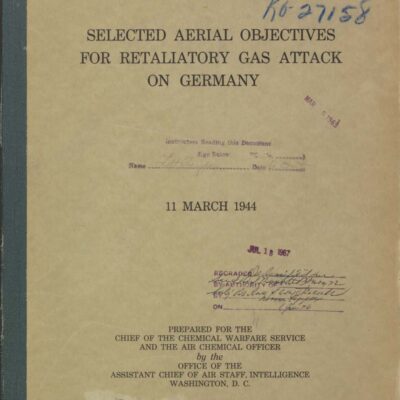

World War II: Targeted Aerial Objectives for Retaliatory Gas Attacks on Germany and Japan
$3.94 Add to Cart -
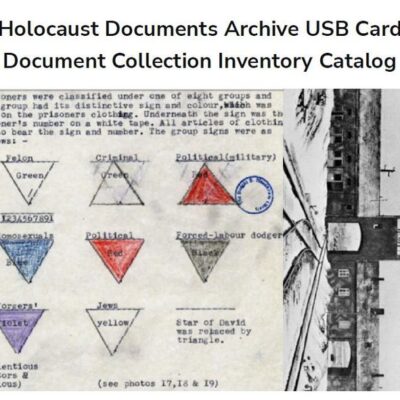
Holocaust Document Archive PDF file – Inventory Catalog of Document Collection
$3.94 Add to Cart -


Operation POPEYE in the Vietnam War
$5.94 Add to Cart -
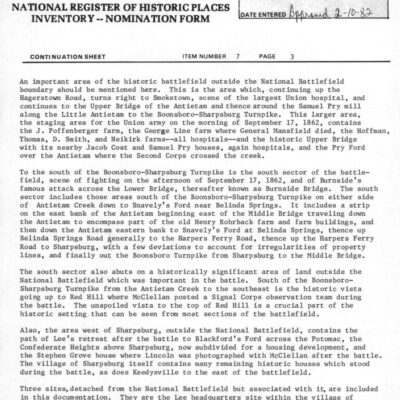
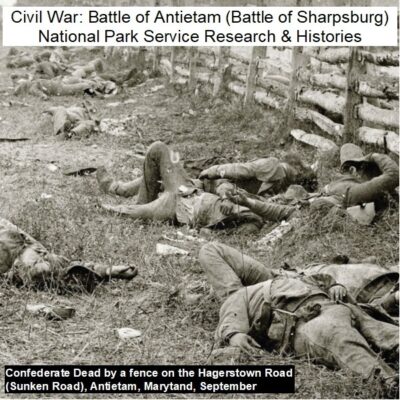
Civil War: Battle of Antietam (Sharpsburg) – National Park Service Archives
$9.99 Add to Cart